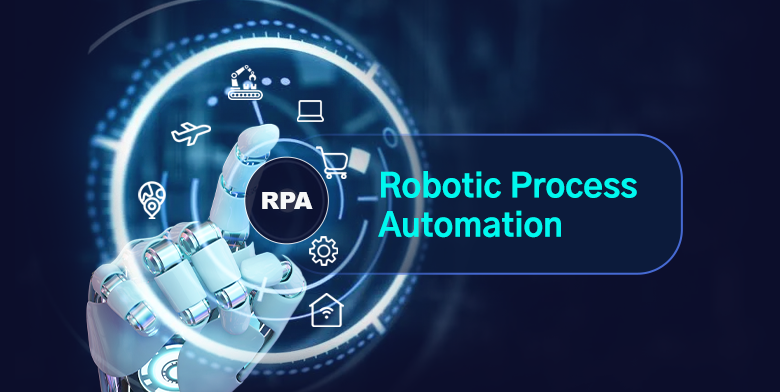Looking to optimize business processes? Discover the power of RPA services

In today’s volatile and competitive business environment, organizations are constantly seeking ways to optimize their processes for improved efficiency and productivity. One powerful solution that has revolutionized the way businesses operate is ‘automation solutions’. Hence, let us explore the immense power of Robotic Process Automation (RPA in optimizing business processes and how AssistEdge RPA Services, a leading RPA solution that can help organizations achieve their optimization goals.
Understanding RPA
Robotic Process Automation (RPA), one of the ground-breaking solutions of recent times, is a technology that revolutionizes business processes by automating repetitive and rule-based tasks. It involves software robots, a control dashboard, and integration capabilities.
The benefits of RPA services are substantial. Businesses can experience increased productivity, improved accuracy, reduced costs, enhanced compliance, faster processing times, and the ability to reallocate human resources to more valuable tasks.
RPA is not limited to specific industries; it has found wide adoption in banking and finance, healthcare, insurance, manufacturing, retail, telecommunications, and logistics. In these sectors, RPA streamlines critical processes like data entry, claims processing, customer service, inventory management, compliance reporting, and more. This optimization leads to enhanced efficiency and improved customer experiences.
The Role of RPA in business process optimization
RPA plays a crucial role in optimizing business processes by automating repetitive tasks and streamlining workflows. By leveraging software robots, organizations can automate time-consuming and rule-based activities, freeing up human resources to focus on higher-value tasks. This not only increases productivity but also reduces errors and enhances accuracy, leading to improved operational efficiency.
Furthermore, RPA enables organizations to achieve scalability and flexibility in their processes. As business needs evolve, RPA can easily adapt and scale to handle increased workload and accommodate changing requirements. With its ability to integrate with existing systems and applications, RPA provides a seamless and efficient solution for process optimization across various industries.
Integration with existing systems is another key aspect of RPA’s role in business process optimization. RPA platforms like AssistEdge enable smooth integration with different technologies and applications, allowing for end-to-end automation and data exchange. This integration eliminates manual handoffs and reduces the chances of errors, resulting in faster processing times and improved overall efficiency.
Key features and capabilities of RPA
Robotic process automation services provide extensive features and capabilities to automate repetitive tasks and enhance operational efficiency. RPA can replicate human actions, automating activities like data entry, form completion, and calculations to reduce errors and expedite task completion. It excels in automating end-to-end workflows, managing complex processes, handling decision-making, branching, and exception handling.
RPA integrates seamlessly with various applications, databases, and systems, enabling efficient data extraction, manipulation, and synchronization. It offers scalability, allowing organizations to automate tasks at a large scale and deploy robots across departments or locations as required. RPA services typically feature user-friendly interfaces and visual designers that simplify the creation and management of automation processes, enabling business users to actively participate in automation initiatives.
With analytics and reporting capabilities, organizations can gain insights into automation performance, identify bottlenecks, and make data-driven decisions for process optimization. RPA services prioritize security and compliance, providing secure credential management, data encryption, and access controls. Monitoring dashboards, alerts, and technical support ensure smooth automation operations. Overall, RPA services empower organizations to automate tasks, streamline processes, boost productivity, and achieve operational excellence.
Key use cases of RPA services
Data Entry and processing: RPA automates manual data entry tasks, guaranteeing accuracy and efficiency in data processing.
Customer onboarding and support: RPA streamlines customer onboarding processes, automating data collection, verification, and offering harmonious assistance.
Invoice processing and accounts payable: RPA automates invoice processing, diminishing errors, enhancing invoice accuracy, and fast-tracking accounts payable processes.
Report generation and analysis: RPA generates reports automatically by extracting and analyzing data from various sources, saving time, and improving data accuracy.
HR and payroll automation: RPA automates HR and payroll processes, including employee data management, attendance tracking, and payroll calculations.
Supply chain and logistics optimization: RPA optimizes supply chain and logistics processes by automating order processing, inventory management, and tracking.
Implementing RPA Services with AssistEdge: Best Practices
- Identifying processes suitable for automation: Identify processes that are rule-based, repetitive, and time-consuming for maximum automation benefits.
- Collaboration with stakeholders and teams: Involve stakeholders and teams in the RPA implementation process to ensure smooth adoption and align with business goals.
- Choosing the right RPA tools and technologies: Select RPA tools and technologies, such as AssistEdge, that align with the organization’s needs, scalability, and integration capabilities.
- Designing effective RPA workflows: Design well-structured and efficient RPA workflows by mapping the end-to-end process, identifying automation points, and optimizing the sequence of tasks.
- Ensuring security and compliance: Implement robust security measures and adhere to compliance requirements to protect sensitive data and maintain regulatory compliance.
- Monitoring and continuous improvement with AssistEdge: Regularly monitor RPA processes using AssistEdge’s monitoring capabilities, analyze performance metrics, and identify areas for continuous improvement.
Overcoming challenges in RPA adoption
Implementing RPA comes with challenges like change management and employee resistance. To overcome these, organizations should communicate the benefits of RPA, provide comprehensive training, and support, and actively involve employees in the implementation process. This fosters a positive attitude towards RPA and equips employees with the necessary skills for successful adoption.
Technical complexities and integration issues can hinder RPA implementation. Collaboration with IT teams is crucial to ensure seamless integration with existing systems and optimize RPA performance. Proactively addressing these complexities allows organizations to streamline the implementation process and achieve efficient automation.
Setting realistic goals, managing expectations, establishing effective governance and control mechanisms, and investing in employee training are key success factors in RPA implementation. By addressing these areas, organizations can navigate challenges, drive successful RPA adoption, and achieve significant business process optimization.
The Future of RPA: Trends and emerging technologies
RPA is evolving with AI integration, enabling automation of complex tasks and intelligent decision-making for greater efficiency and accuracy. Hyperautomation combines RPA with AI, machine learning, and process mining to optimize end-to-end processes, improving efficiency and agility.
Cognitive bots with natural language processing enhance customer experiences by understanding and processing human language. RPA as a Service and cloud-based solutions offer scalability, flexibility, and easier adoption of RPA.
AssistEdge, a leading RPA platform, evolves with new features and technologies, empowering organizations to optimize business processes. These trends shape the future of RPA, driving efficiency and productivity for organizations. AssistEdge plays a crucial role in guiding successful business process optimization.
Final thoughts
Hence, to overcome challenges in RPA implementation, organizations should communicate benefits, provide comprehensive training, involve employees, and address resistance. Collaboration with IT teams streamlines integration and optimizes RPA performance. Setting realistic goals, establishing effective governance, and investing in employee training are vital for success. These strategies drive successful RPA adoption and business process optimization.



